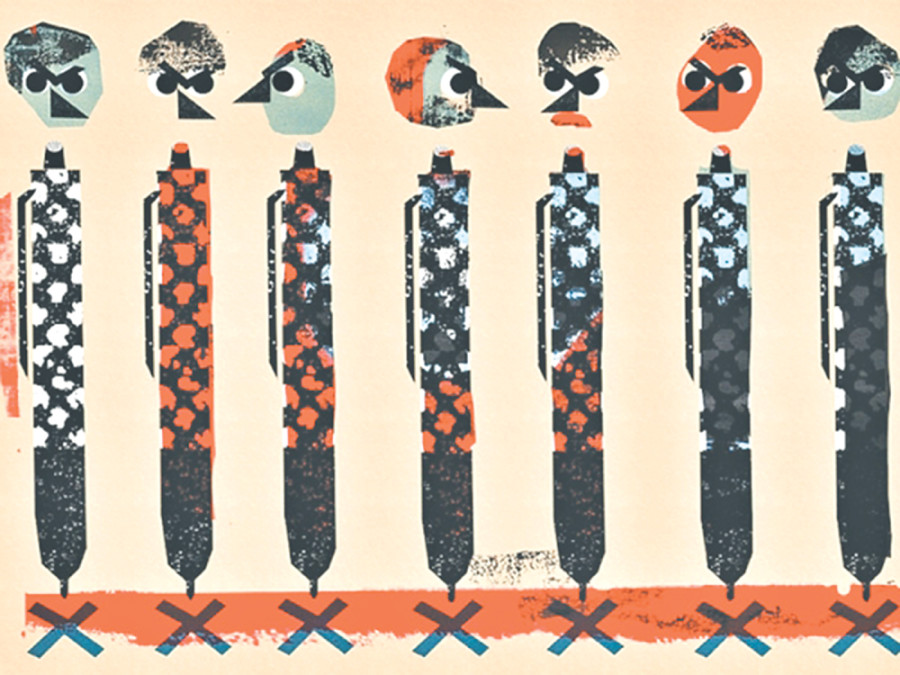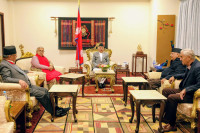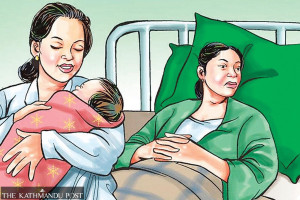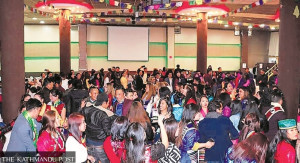Opinion
Same as before
Discriminatory provisions in the constitution have led to endless agitation and unrest
Amar Kant Jha
Since the new constitution of Nepal is non-inclusive and discriminatory, long-marginalised groups like Madhesis, Tharus and other ethnic communities have been holding various protests to secure their political rights. One of the most discriminatory aspects of the constitution is the way the seven federal provinces have been demarcated in open violation of People’s Movement 2006, 12-point agreement signed between the Seven-Party Alliance and the Maoists, and the various accords reached between the state and the Madhesis, Tharus and other ethnic communities.
Purposeful restructuring
Except for Province 2, the other six provinces have been delineated in such a manner that hill high castes form a majority of the population allowing them to perpetuate their hegemony. The bottom line of the Madhesi-Tharu agitators is the formation of two autonomous provinces in Tarai-Madhes. If three eastern and nine western districts of Tarai-Madhes are included in the two adjoining provinces of Tarai-Madhes instead of being combined with hill provinces, this will help not only Tharus and Madhesis but also enable Rais, Limbus, Magars and Gurungs to gain access to state authority. If this is done, Rai-Limbu ethnic groups and high hill castes will be almost equal in population in Province 1.
Similarly, if the western districts of Tarai-Madhes are included in Province 5, and if Provinces 4, 6 and 7 are reorganised by retaining 10 hill districts (Gorkha, Lamjung, Tanahu, Kaski, Manang, Mustang, Myagdi, Baglung, Palpa and Syangja) in Province 4 and retaining 11 western districts in Provinces 6 and 7, Magar-Gurung ethnic groups and high hill castes will be almost equal in population in these provinces. This kind of demarcation will allow all sizeable population groups to have a proportional share in the power structure and the restructuring of the state will, thus, be purposeful.
With regard to representation, the constitution states that each province will elect eight members to the National Assembly irrespective of its population. Accordingly, Provinces 6 and 7 with a population of 397,537 will send eight members each and Province 2 with a population of 5,402,346 will also send eight members. This is is a glaring case of discriminatory representation. Instead, the number of representatives should be determined on the basis of the population of the province.
Linguistic policy
Regarding the choice of official languages for the federal and provincial governments, the constitution states that Nepali shall be the official language of the federal government, and in addition to Nepali, one or two languages most widely spoken in the province can be adopted as its official languages. Since Nepali shall be the official language of both the federal and provincial governments, and since a province cannot afford to use two or three languages for its official purposes, the age-long monolingual policy favouring Nepali will persist.
As a result of this monolingual policy, more than 2 million Nepalis have abandoned their mother tongue and shifted to Nepali, resulting in language loss or endangerment. Instead of such a discriminatory linguistic provision, Nepali and one or two resourceful languages should be adopted by the federal government as its official languages. Meanwhile, the provinces may declare one or two languages or Nepali as their official languages. Under this provision, the languages of the province will get priority and help bring socio-economic transformation among linguistically oppressed groups. The names of the languages used by the federal and provincial governments should be listed in a separate schedule of the constitution.
This kind of constitutional provision is found in India, which is noted in the world for safeguarding linguistic pluralism. According to the Constitution of India, Hindi and English are the official languages of the federal government while state legislatures can adopt any one or more of the languages of the state for its official purposes. The South African model is another option. The constitution of South Africa lists 10 indigenous languages and English as the official languages. The national and provincial governments can select any two from the list for their official purposes. Based on this model, we can enlist languages spoken by at least one percent of Nepalis. Agreeing on any one of these language policy models will promote multilingualism in our country.
Top constitutional posts
The Madhesi Front also disapproves of the constitutional provision which prohibits naturalised citizens from assuming top constitutional posts. Since Tarai-Madhes and the five neighbouring states of India have a unique relationship, sharing an open border, common languages, cultures, religions and history, and since both sides are connected by blood and marriage, a great majority of the naturalised citizens in Nepal come from Tarai-Madhes. They will be seriously affected by this provision, so it needs to go. The new constitution contains many such discriminatory provisions, provoking endless movements and unrest in the country. The top leaders of the three big parties must be held responsible for the current political chaos in the country. They rushed the constitution through the Constituent Assembly without any serious discussion and backtracked on their promises to the people. They have a duty to initiate real negotiations with the agitating parties and resolve all constitutional issues.
Jha is a retired Tribhuvan University professor




 13.12°C Kathmandu
13.12°C Kathmandu











